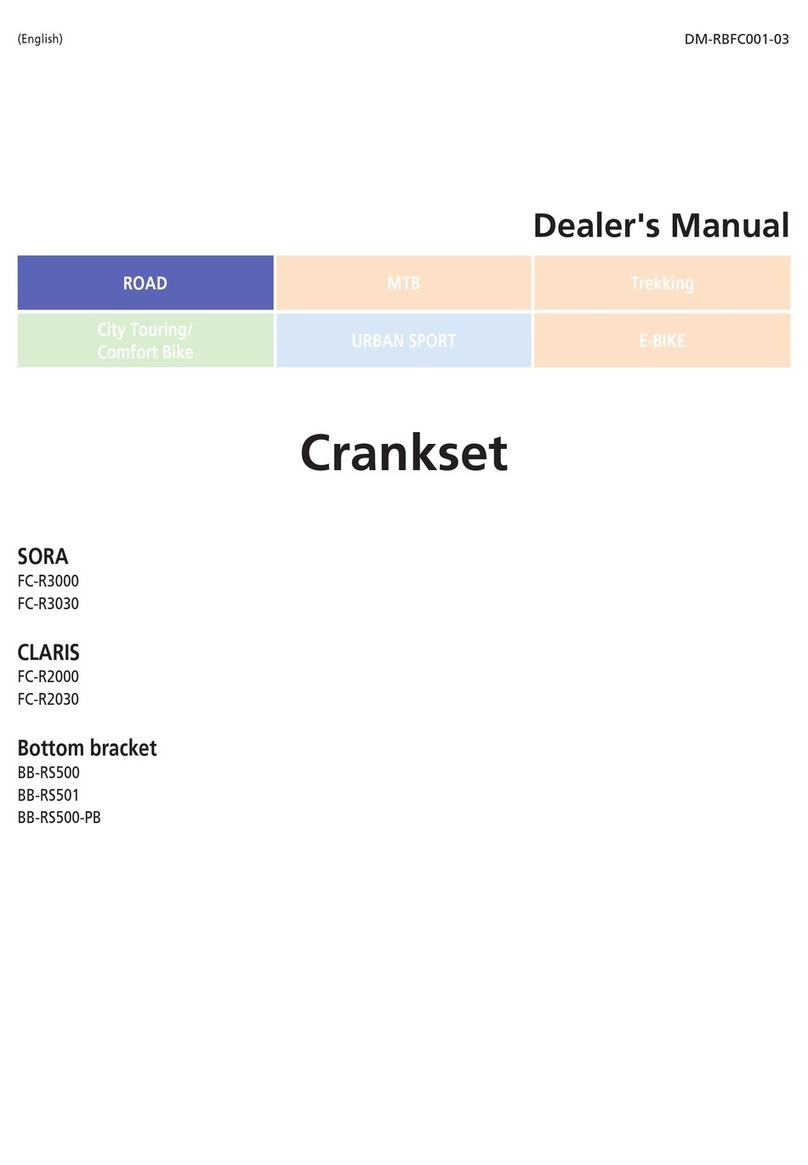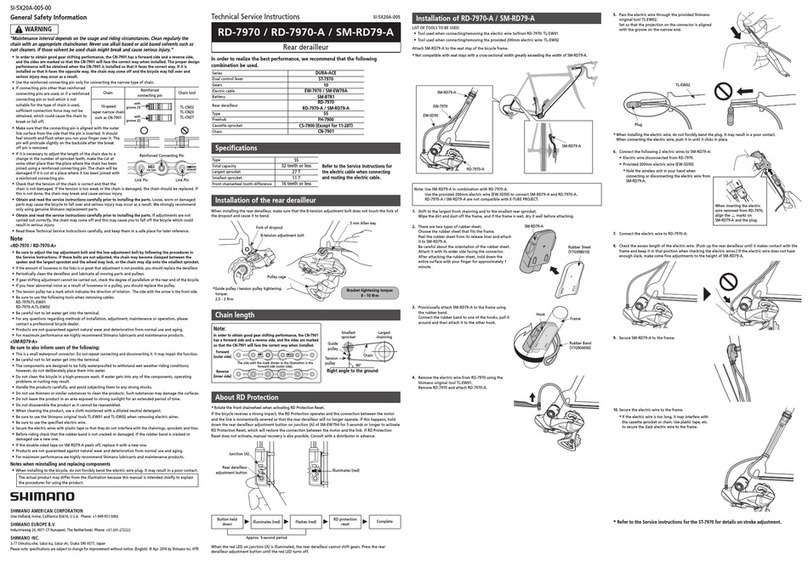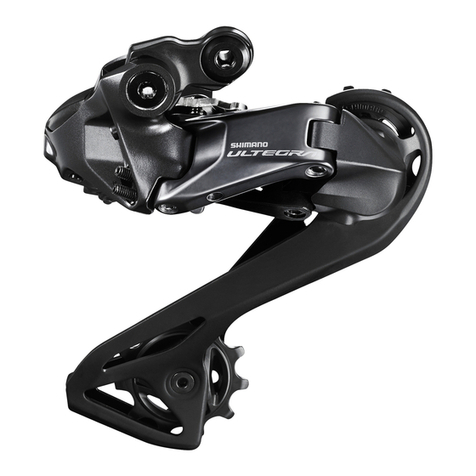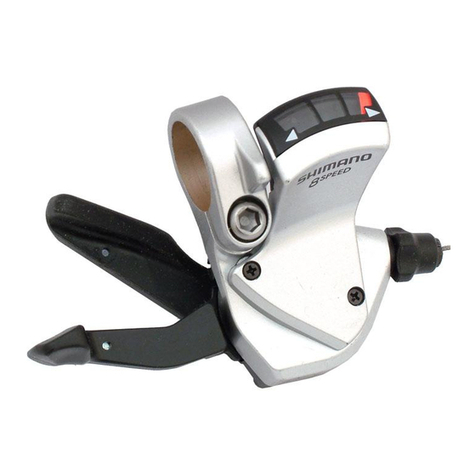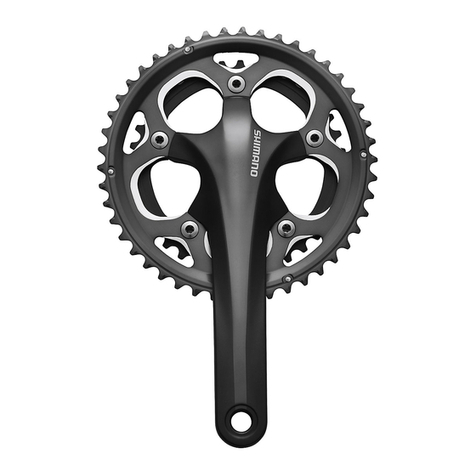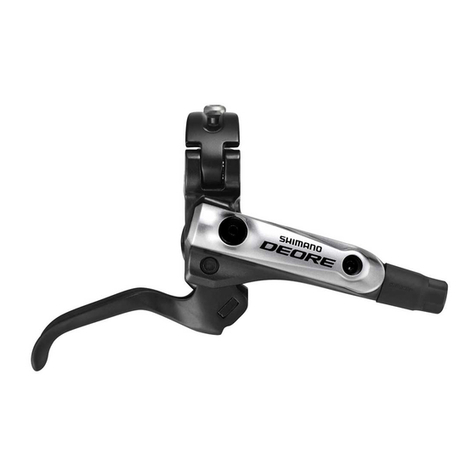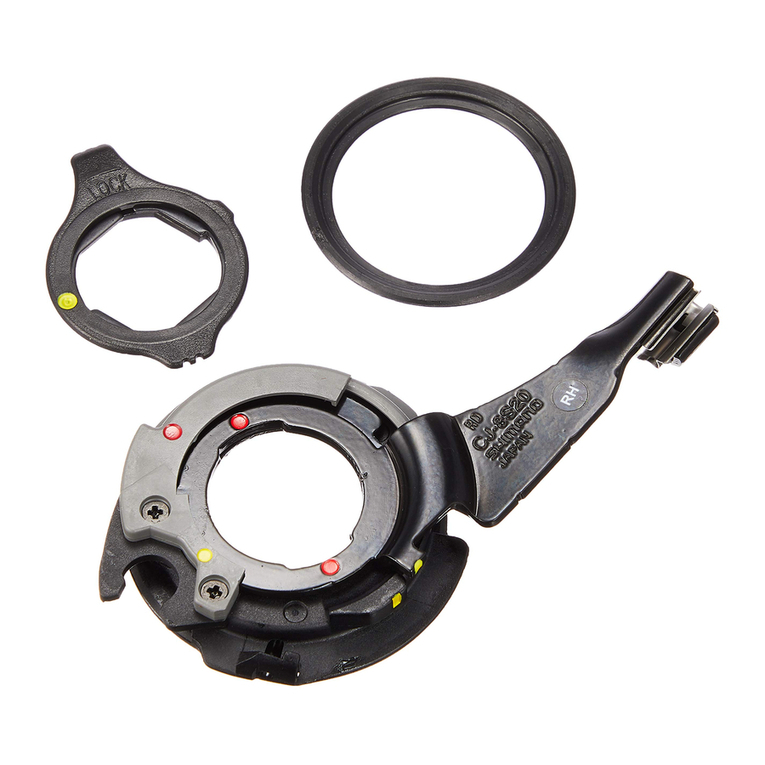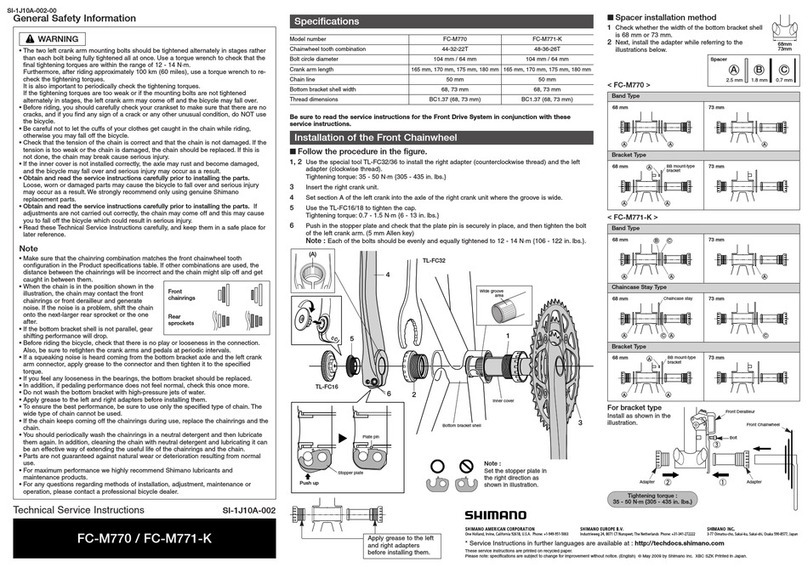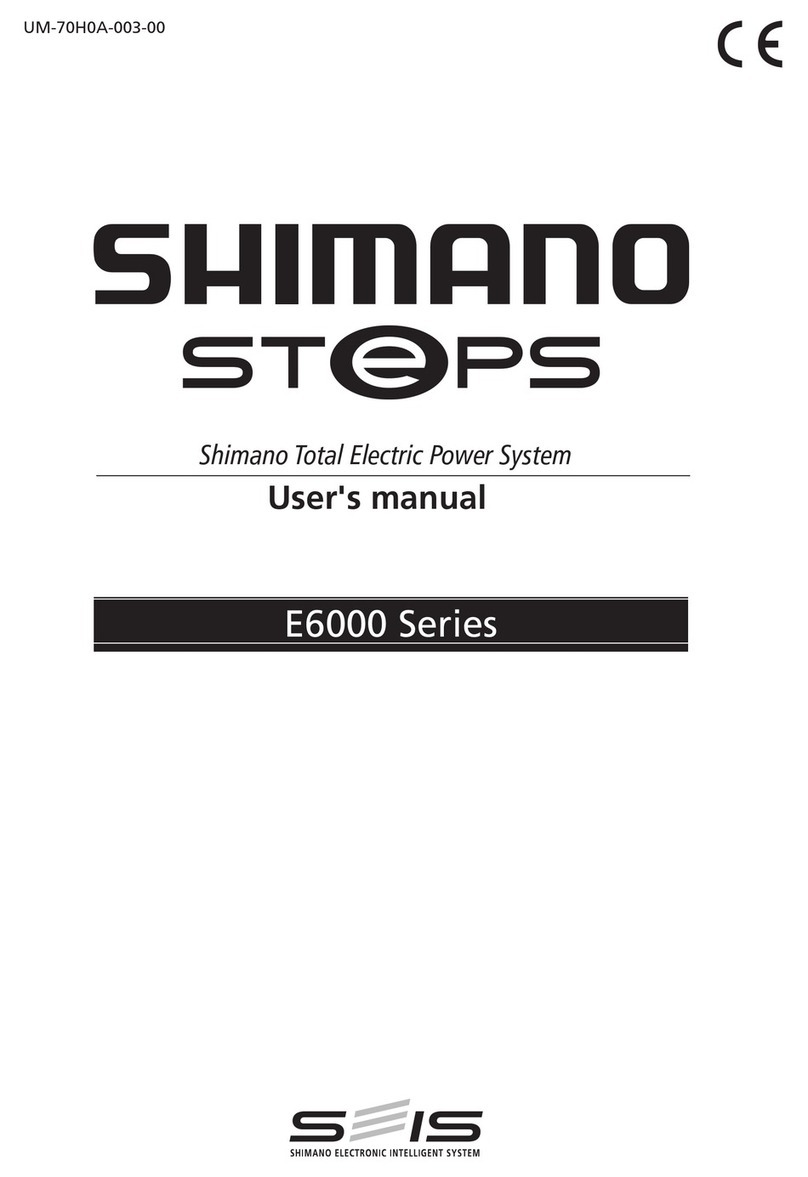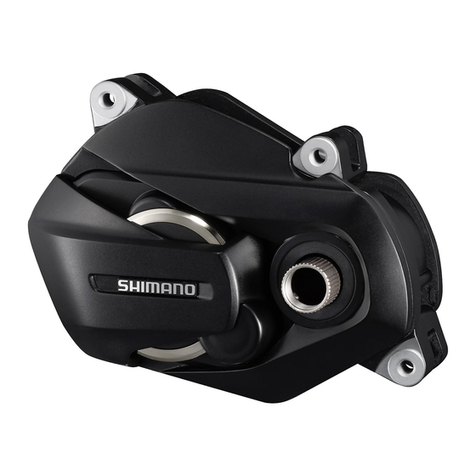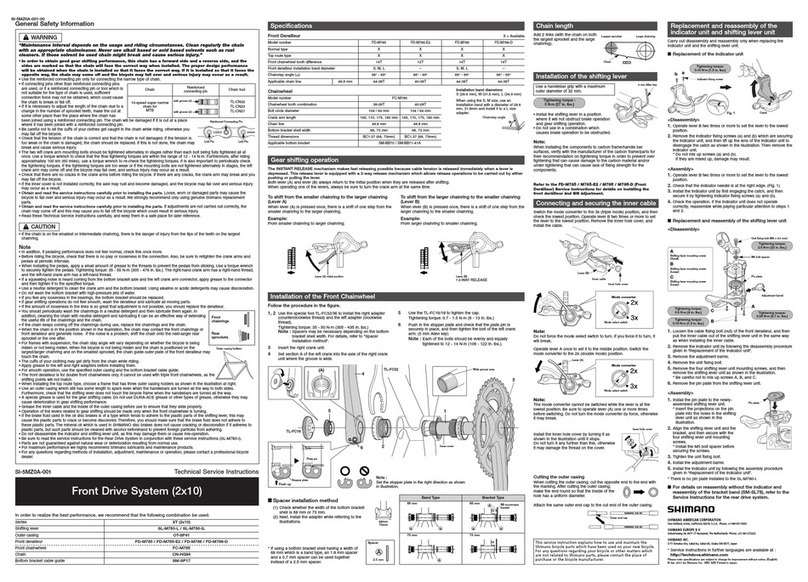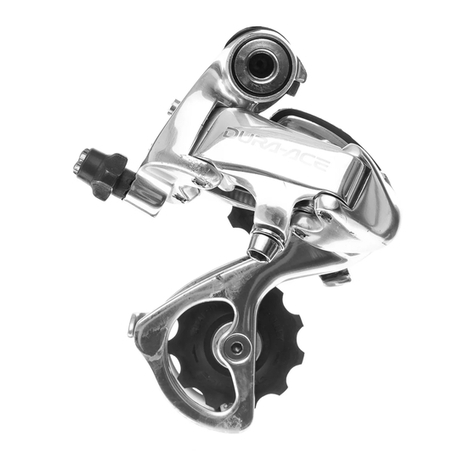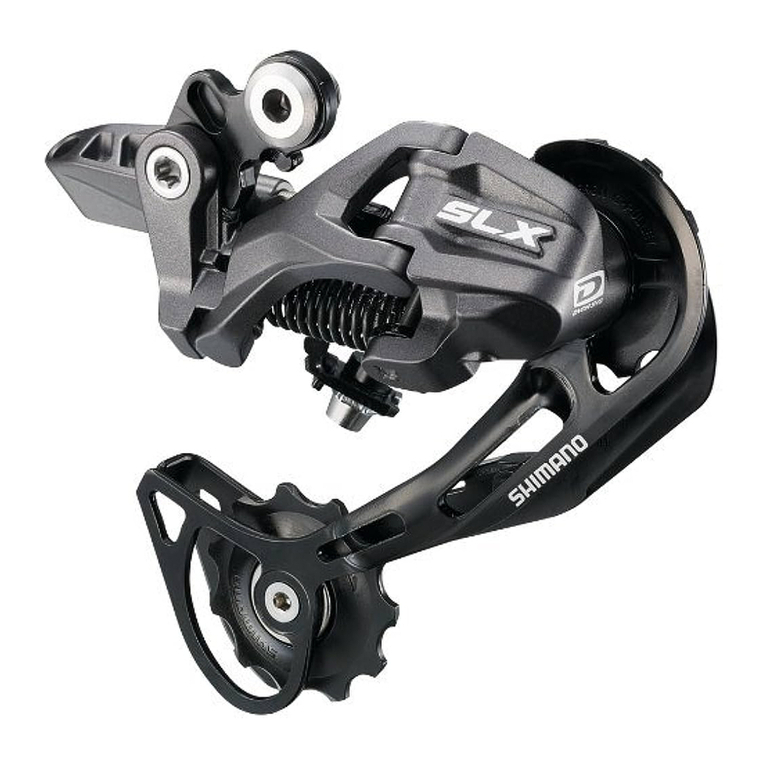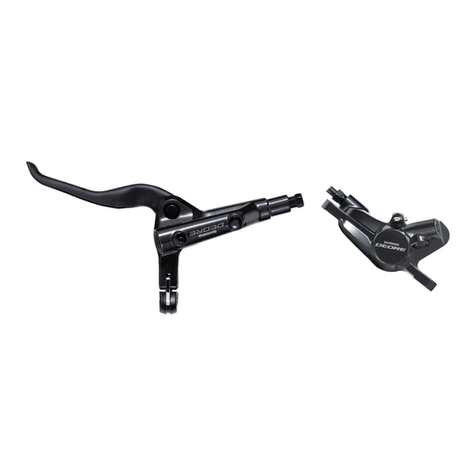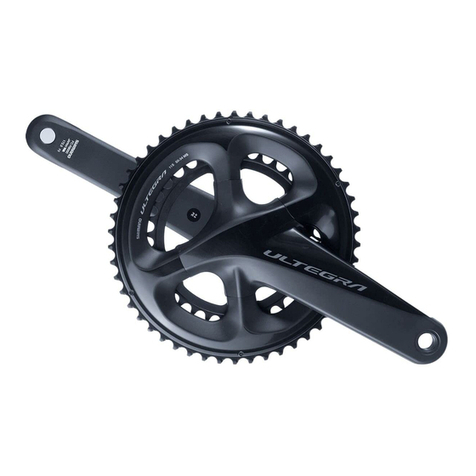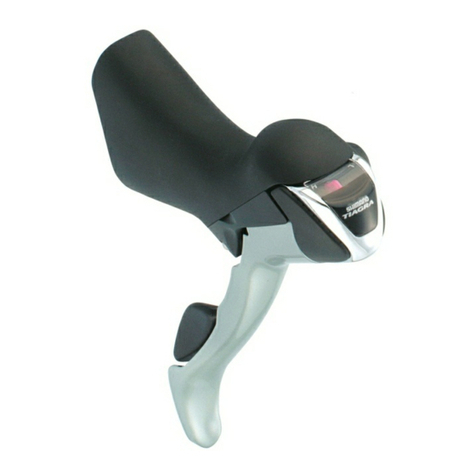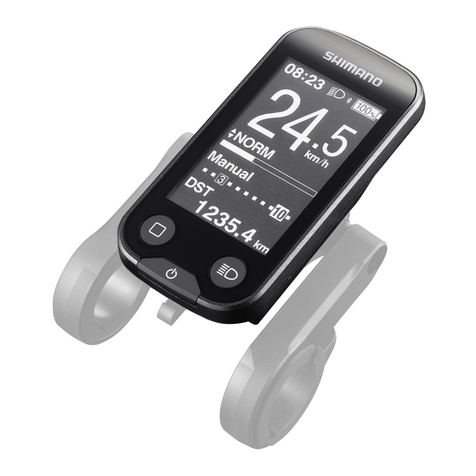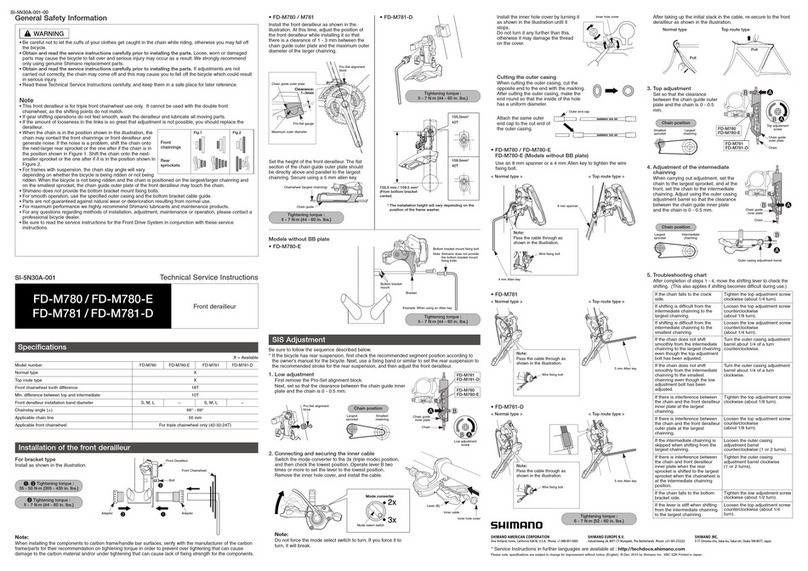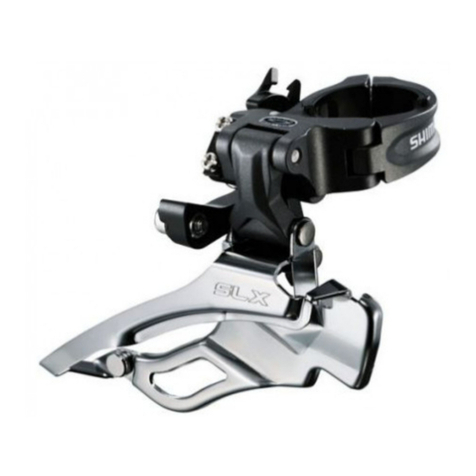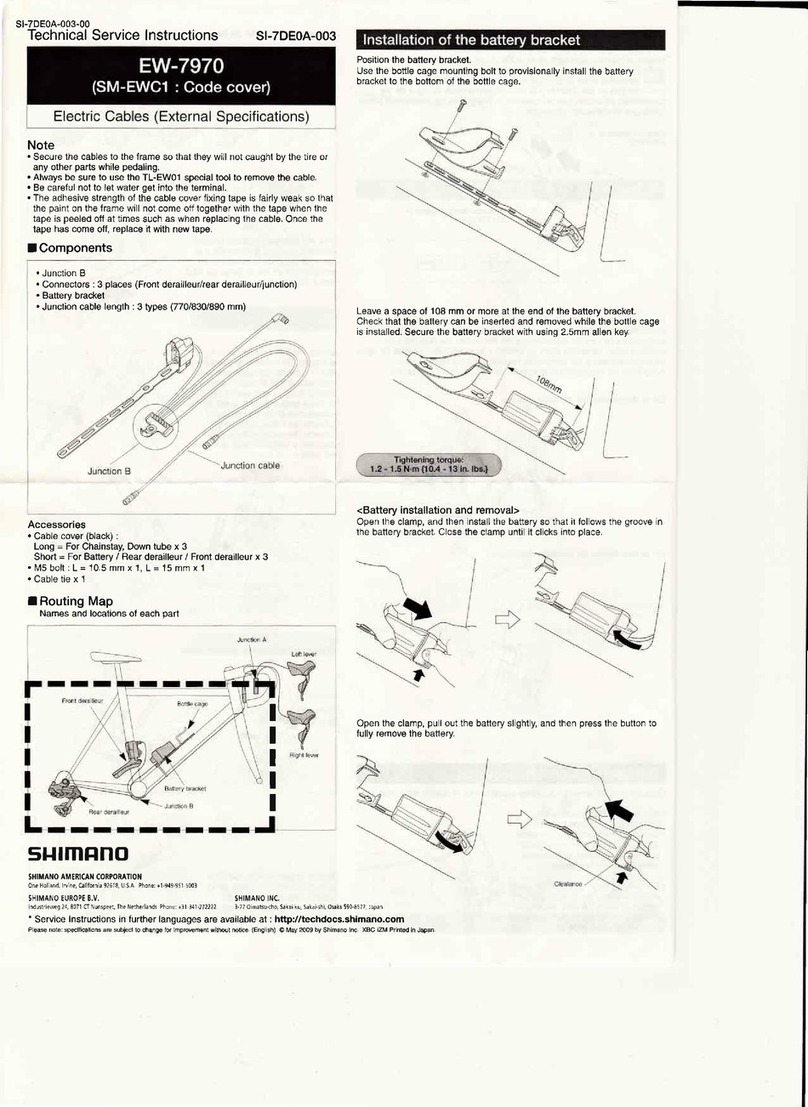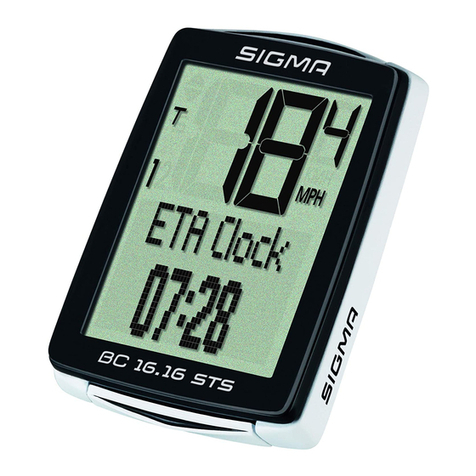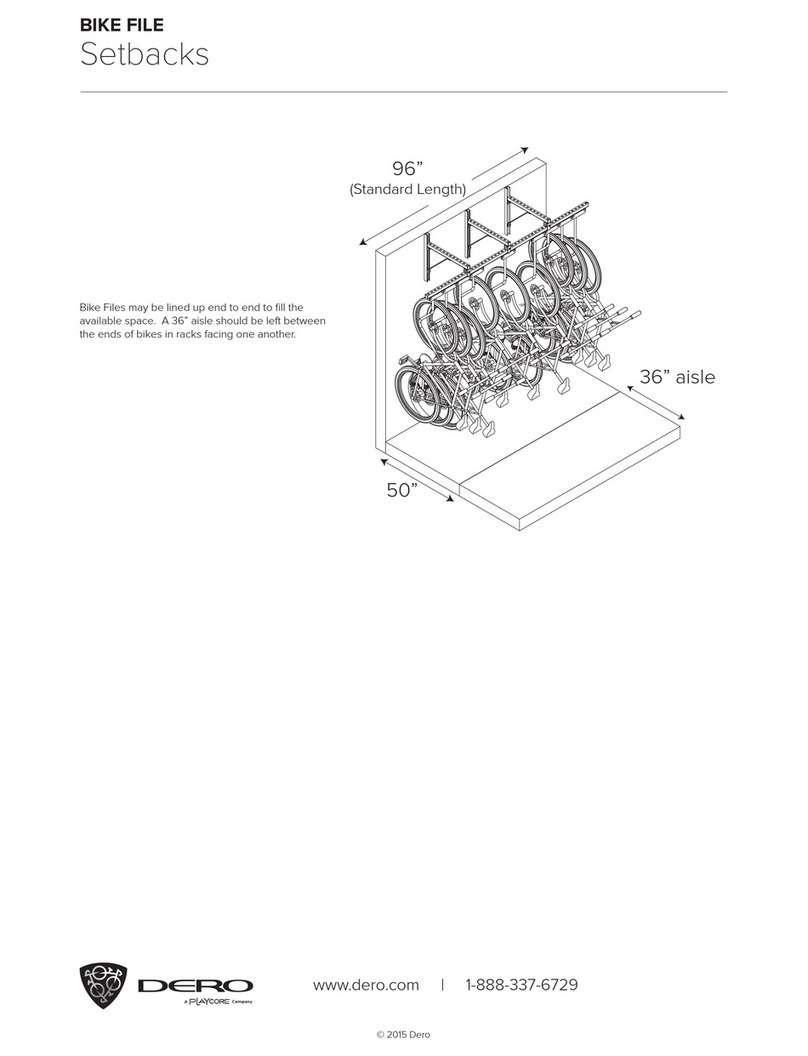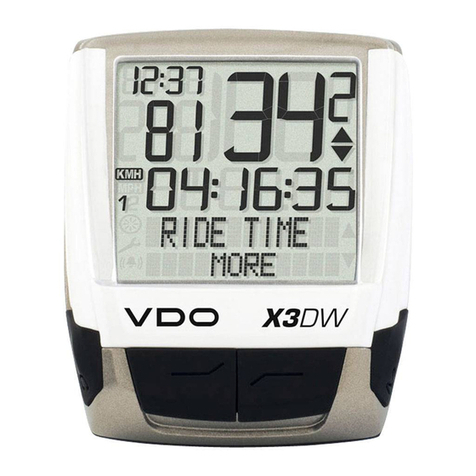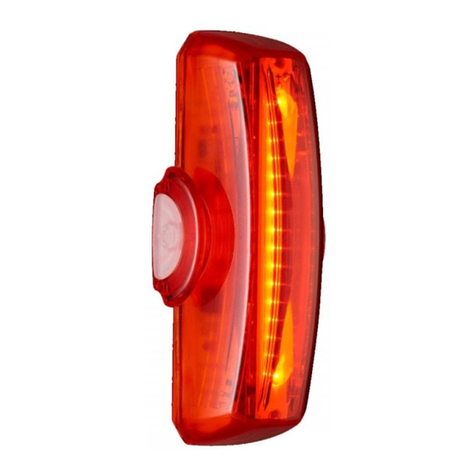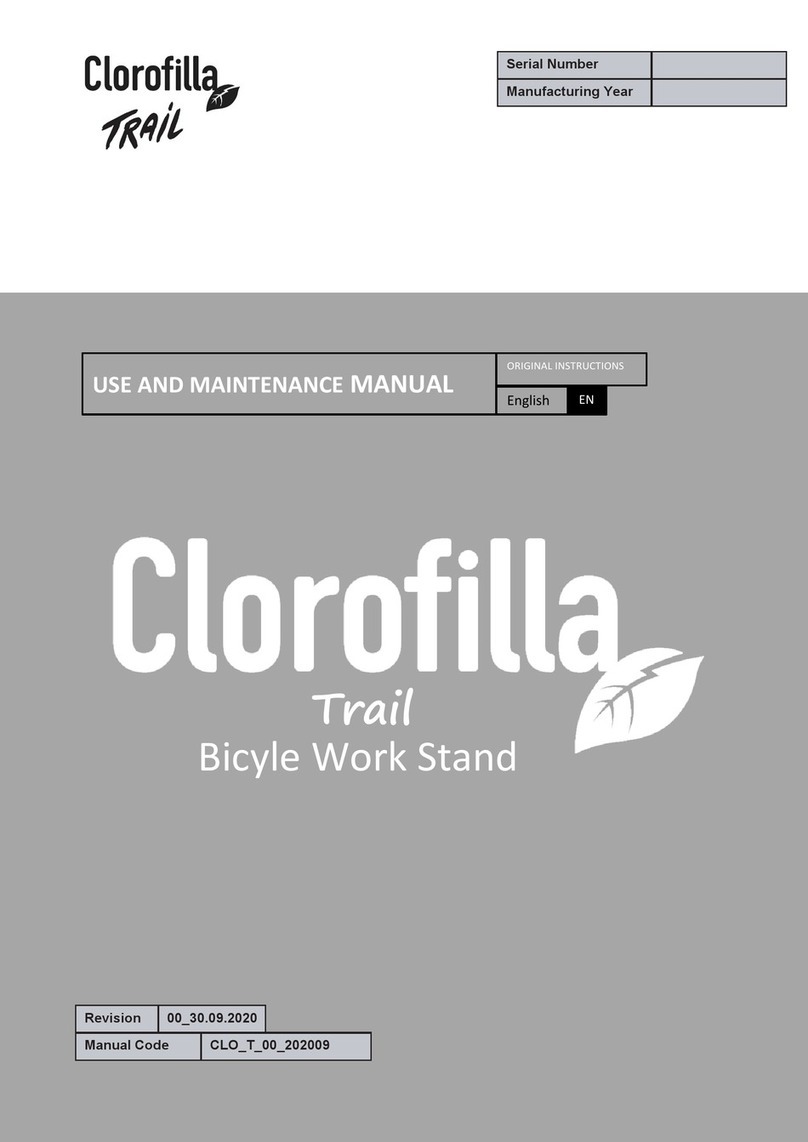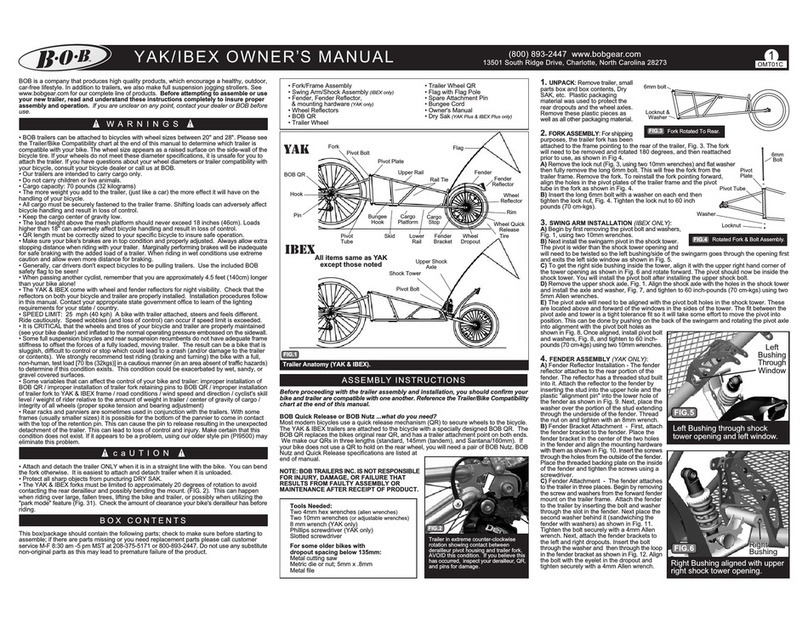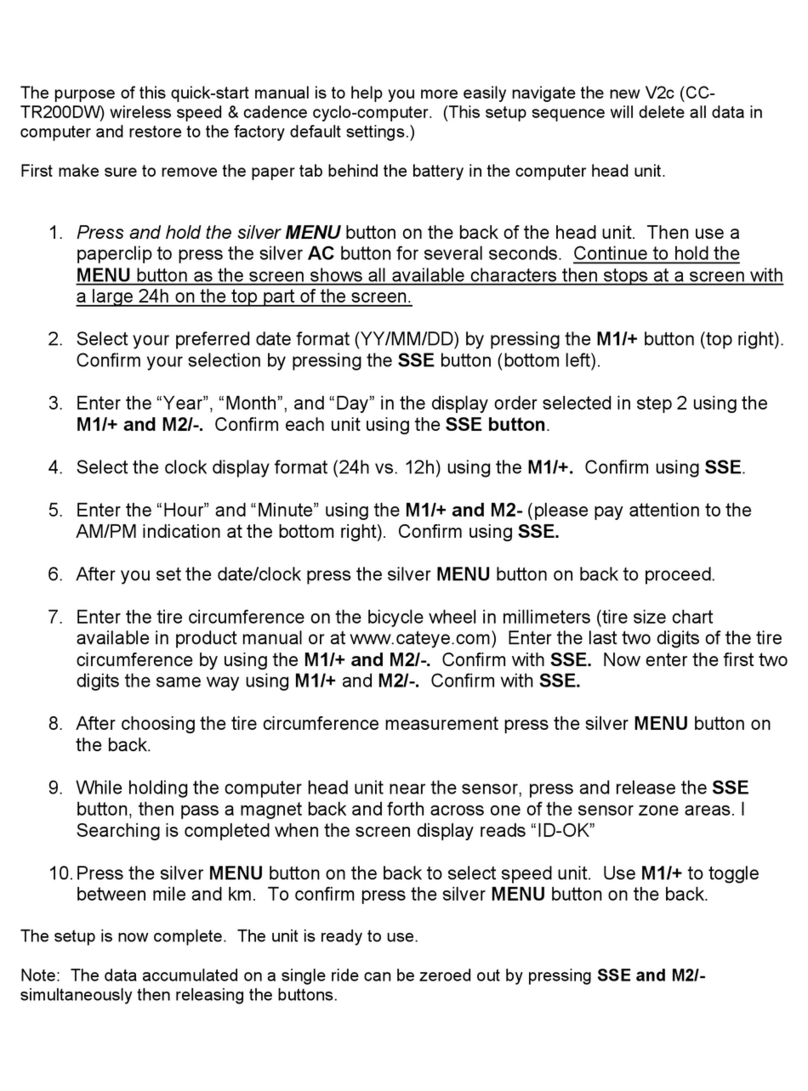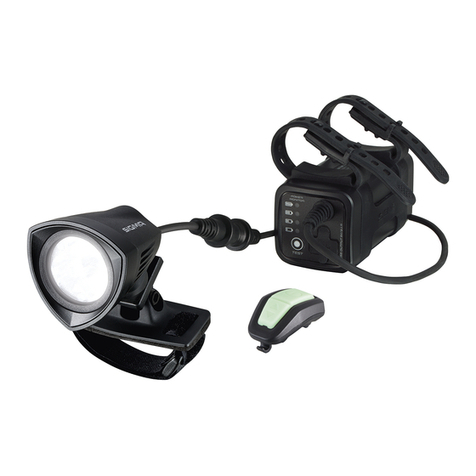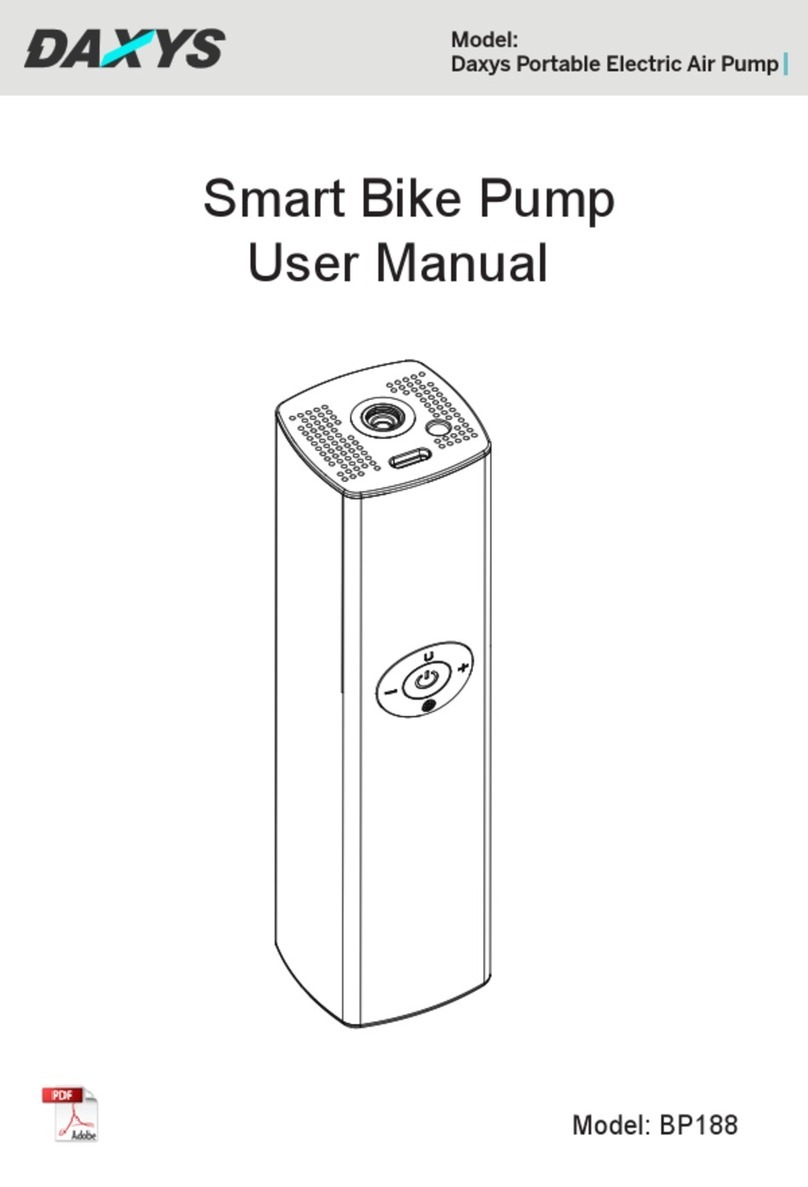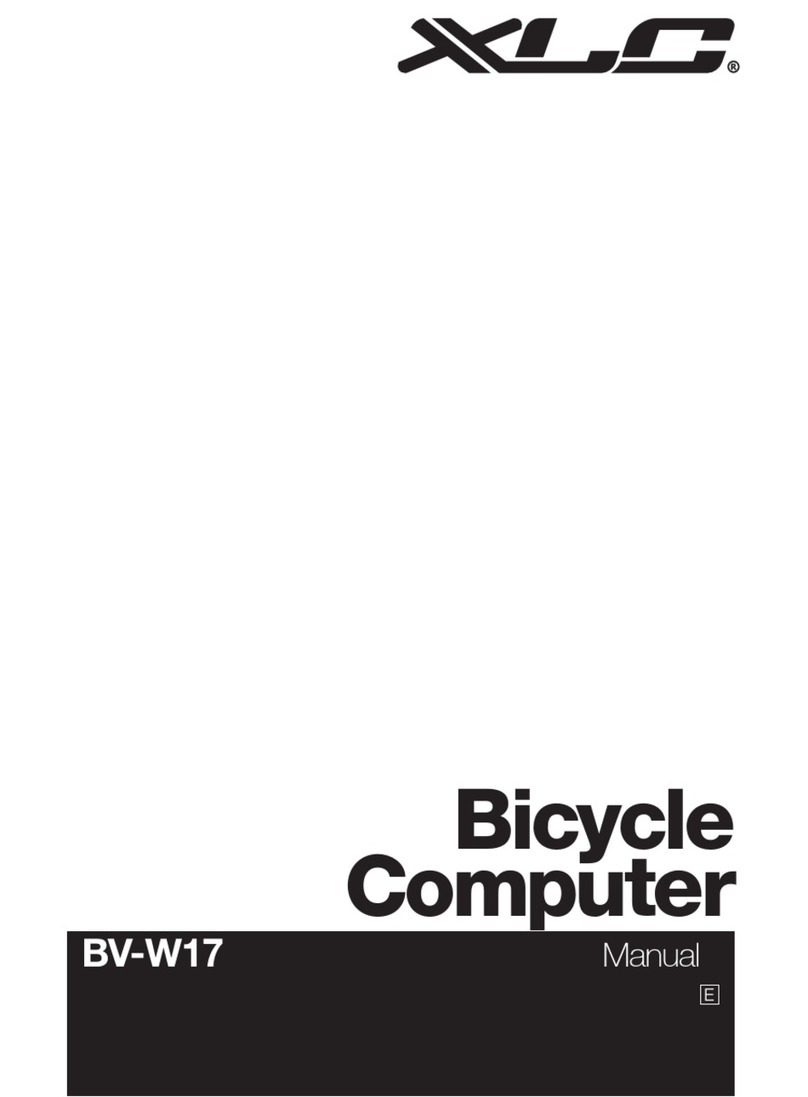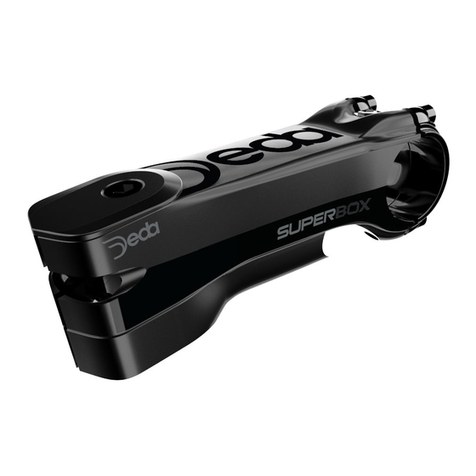Connect the inner cable to the
derailleur as shown in the illustration.
Inner cable
< RD-TX70 / RD-TX50 / RD-FT30 >
max.
angle
max.
angle
RD-FT30
RD-FT30
RD-TY18
RD-TY18
Mounting the shifting lever
Tightening torque:
2 N·m {18 in. lbs.}
Handlebar
Half grip
Install the brake lever in a position where it will not obstruct brake
operation.
Do not use in a combination which causes brake operation to be
obstructed.
Gear shifting operation
Pedaling becomes
heavier
Pedaling becomes
lighter
Model number
Gears
SL-RS43-7
SIS 7 - gears
Shifting lever
Specifications
SL-RS43-6
SIS 6 - gears
Tooth combination
Gears
14, 16, 18, 20, 22, 24, 34T
14, 16, 18, 20, 22, 24, 28T
13, 15, 17, 19, 21, 24, 34T
7
Type
Gears
Total capacity
Rear largest sprocket
Rear smallest sprocket
SS
7 / 6
17T
28T
11T
Front chainwheel tooth difference ––
RD-FT30
Model number
Rear derailleur
Sprocket tooth configurations
14, 16, 18, 21, 24, 34T
14, 16, 18, 21, 24, 28T
6
GS
6
34T
28T
14T
20T
SS
6
28T
28T
14T
13T
RD-TY18
Smartcage
7 / 6
43T
28-34T
11T
20T
RD-TX30
Smartcage
7 / 6
43T
28-34T
11T
20T
RD-TX50
Smartcage
7 / 6
43T
28-34T
11T
20T
RD-TX70
SIS40
7 - gears
SIS40
6 - gears
CN-HG50
SM-SP18/BT18
CN-HG50
SM-SP18/BT18
CN-HG50
SM-SP18/BT18
CN-HG50
SM-SP18/BT18
SIS40
MF-TZ37/HG50
MF-HG37/TZ07
MF-HG40-6/HG22
MF-TZ06
MF-TZ37/TZ07
MF-HG50
MF-HG40-6/HG22
MF-TZ06
SL-RS43-6 SL-RS43-7 SL-RS43-6
7 - gears
RD-TX70/RD-TX50
RD-TX30
RD-TX70/RD-TX50
RD-TX30/RD-TY18
RD-TX70/RD-TX50
RD-TX30
RD-FT30
RD-TX70/RD-TX50
RD-TX30/RD-TY18
RD-FT30
SIS40
6 - gears
Right
Multiple freewheel
Chain
Bottom bracket cable guide
Shifting lever
Rear derailleur
Outer casing
In order to realize the best performance, we recommend that the following combination be used.
Series
Gears
Tourney
• Use neutral detergent to clean the chain. Do not use alkali-based or acid based detergent such as rust cleaners as it may
result in damage and/or failure of the chain.
• Use the reinforced connecting pin only for connecting the narrow type of chain.
• There are two different types of reinforced connecting pins available. Be sure to check the table below before selecting
which pin to use. If connecting pins other than reinforced connecting pins are used, or if a reinforced connecting pin or tool
which is not suitable for the type of chain is used, sufficient connection force may not be obtained, which could cause the
chain to break or fall off.
• If it is necessary to adjust the length of the chain due to a change in the number of sprocket
teeth, make the cut at some other place than the place where the chain has been joined
using a reinforced connecting pin or an end pin. The chain will be damaged if it is cut at a
place where it has been joined with a reinforced connecting pin or an end pin.
• Check that the tension of the chain is correct and that the chain is not damaged. If the
tension is too weak or the chain is damaged, the chain should be replaced. If this is not
done, the chain may break and cause serious injury.
• Check that the wheels are fastened securely before riding the bicycle. If the wheels are loose in any way, they may come off
the bicycle and serious injury may result.
• Obtain and read the service instructions carefully prior to installing the parts. Loose, worn, or damaged parts may cause
injury to the rider.
We strongly recommend only using genuine Shimano replacement parts.
• Read these Technical Service Instructions carefully, and keep them in a safe place for later reference.
Note
• The reinforced connecting pins cannot be used with the UG chain, otherwise the connections will not move properly and
noise will occur.
• If gear shifting operations do not feel smooth, wash the derailleur and lubricate all moving parts.
• If the amount of looseness in the links is so great that adjustment is not possible, you should replace the derailleur.
• You should periodically clean the derailleur and lubricate all moving parts (mechanism and pulleys).
• If gear shifting adjustment cannot be carried out, check the degree of parallelism at the rear end of the bicycle. Also check if
the cable is lubricated and if the outer casing is too long or too short.
• If you hear abnormal noise as a result of looseness in a pulley, you should replace the pulley.
• If the wheel becomes stiff and difficult to turn, you should lubricate it with grease.
• Do not apply any oil to the inside of the hub, otherwise the grease will come out.
• You should periodically wash the sprockets in a neutral detergent and then lubricate them again. In addition, cleaning the
chain with neutral detergent and lubricating it can be a effective way of extending the useful life of the sprockets and the
chain.
• If the chain keeps coming off the sprockets during use, replace the sprockets and the chain.
• Use an outer casing which still has some length to spare even when the handlebars are turned all the way to both sides.
Furthermore, check that the shifting lever does not touch the bicycle frame when the handlebars are turned all the way.
• Grease the inner cable and the inside of the outer casing before use to ensure that they slide properly.
• Use a frame with internal cable routing is strongly discouraged as it has tendencies to impair the SIS shifting function due to
its high cable resistance.
• Operation of the levers related to gear shifting should be made only when the front chainwheel is turning.
• For smooth operation, use the specified outer casing and bottom bracket cable guide.
• To ensure the best performance, be sure to use only the specified type of chain. The wide type chain cannot be used.
• For maximum performance we highly recommend Shimano lubricants and maintenance products.
• Parts are not guaranteed against natural wear or deterioration resulting from normal use.
• For any questions regarding methods of installation, adjustment, maintenance or operation, please contact a professional
bicycle dealer.
Technical Service Instructions SI-6KP0A
Rear Drive System
Leave a gap of 0.5 mm between the Revo-shift
lever and the half grip.
Loosen the outer casing
adjustment barrel until the chain
touches the 3rd sprocket and
makes noise. (counter clockwise)
Tighten the outer cable adjusting
barrel until the chain returns to
the 2nd sprocket. (clockwise)
Best setting
The best setting is when the shifting lever is operated
just enough to take up the play and the chain touches
the 3rd sprocket and makes noise.
* Return the lever to its original position (the position
where the lever is at the 2nd sprocket setting and it has
been released) and then turn the crank arm clockwise.
If the chain is touching the 3rd sprocket and making
noise, turn the outer casing adjustment barrel
clockwise slightly to tighten it until the noise stops and
the chain runs smoothly.
Operate lever to change gears, and check that no
noise occurs in any of the gear positions.
Operate the shifting lever several times to move
the chain to the 2nd sprocket. Then, while
pressing the lever just enough to take up the play
in the lever, turn the crank arm.
SIS Adjustment
For the best SIS performance, periodically lubricate all power-transmission
parts.
When shifting to 3rd
Play
When no sound at
all is heard
adjustment
ballel RD-TX70/50
RD-FT30
RD-TX30
adjustment
ballel RD-TX70/50
RD-FT30
RD-TX30
Replacing the inner cable
➀
➁
➂
Replace the inner cable by carrying out
steps ➀to ➂as shown in the illustrations.
General Safety Information
Chain
WARNING
Chain tool
9-speed super narrow
chain such as
CN-7701 / CN-HG93
8- / 7- / 6-speed narrow
chain such as
CN-HG50 / CN-IG51
Reinforced connecting pin
TL-CN32 / TL-CN23
TL-CN32 / TL-CN23
Silver
Black
Reinforced Connecting Pin
End Pin Link Pin

